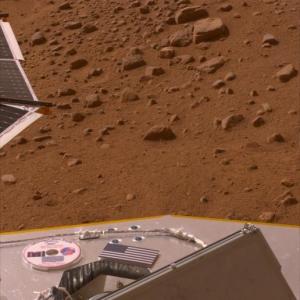 We have just watched, along with millions of other space junkies, NASA’s successful landing of the Curiosity rover on the surface of the planet Mars. And I must confess that those of us here, and at the Jet Propulsion Lab in California, along with millions from around the world, have been ecstatic for hours.
We have just watched, along with millions of other space junkies, NASA’s successful landing of the Curiosity rover on the surface of the planet Mars. And I must confess that those of us here, and at the Jet Propulsion Lab in California, along with millions from around the world, have been ecstatic for hours.
It is one thing to view the Mars crater landing on the faces of the crew working the mission; it is another to see the swiftly delivered almost live photos that they are viewing themselves. Spectacular thumbnails first seen through transparent lens covers, then through the lenses themselves, made us oooh! and aaah!
Seeing a live broadcast by NASA is now over for the night. And over too is my first voyeuristic adventure with Curiosity. It has been enormously satisfying. But now it is back to the canned, replayed stuff from the past. And soon tonight’s events will also become a part of the past history of the United States space program, a program that has been exciting me for six decades.



